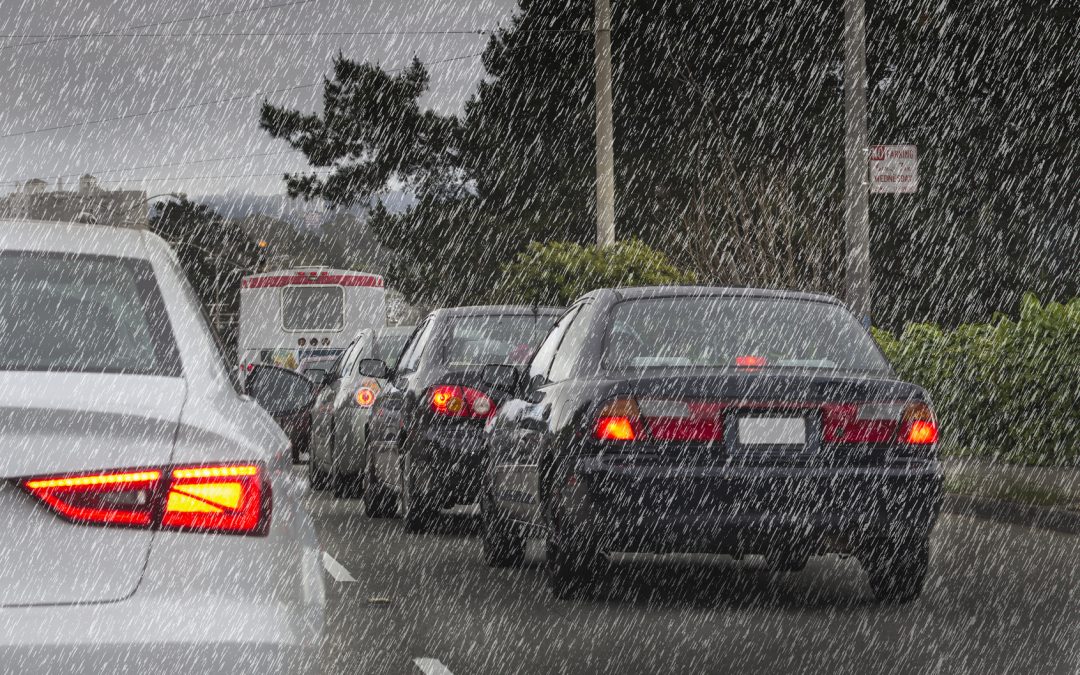Driving in heavy rain on UK roads can be extremely hazardous. Wet weather significantly increases the risk of accidents, breakdowns, and damage to your vehicle. To help you stay safe and protect your car, here are some detailed tips and advice to prepare for wet conditions, avoid hazards like standing water, and minimize the risk of costly damage.
The Risks of Driving in Heavy Rain
Wet weather often leads to an increase in breakdown recovery callouts, especially for older vehicles, as damp conditions can disrupt engines and electrical systems. One of the most common causes of rain-related breakdowns is driving through deep standing water. Despite advances in vehicle technology, cars are not waterproof and can suffer catastrophic damage if exposed to too much water.
A major concern is water entering the engine, which can cause the engine to seize. This type of damage can destroy vital components like piston connecting rods and other internal parts, often resulting in the need for a complete engine replacement. Such repairs can cost thousands of pounds and create considerable hassle, from arranging payment to being without your vehicle for an extended period.
What many drivers don’t realize is that insurers may not cover flood-related engine damage if it was caused by driving through deep water. Unless you can prove the damage occurred through no fault of your own, you may be left footing the bill.
Tips Before Setting Off
- Evaluate Your Journey
- Ask yourself if the journey is essential. Can it be delayed until the rain subsides or conditions improve? Unnecessary travel during heavy rain can increase risks to you and your vehicle.
- Plan Your Route
- Research your route in advance and avoid areas prone to flooding. Check local weather reports and traffic updates for potential delays or closures.
- Allow extra travel time to account for slower driving speeds and potential congestion caused by poor visibility and waterlogged roads.
- Prepare Your Vehicle
- Check Screen Wash: Ensure your washer fluid is topped up to maintain clear visibility. Use a screen wash solution that prevents smearing and provides better cleaning in wet conditions.
- Inspect Wipers: Check that your front and rear windscreen wipers are in good condition. If they leave streaks or don’t clear the screen effectively, replace them immediately.
- Check Lights: Confirm all vehicle lights are functioning properly. Headlights, taillights, and indicators are crucial for visibility in poor weather.
- Fuel Up
- Fill your fuel tank before setting off. Wet-weather driving often involves slower speeds, stop-and-go traffic, and increased use of lights, heaters, and the radio—all of which consume more fuel.
- Carry Emergency Supplies
- Keep an emergency kit in your car, including items like a torch, phone charger, blankets, a first-aid kit, and a warning triangle. These can be invaluable if you get stranded.
While Driving in Heavy Rain
- Adjust Your Speed
- Drive slower than usual to maintain better control and reduce the risk of aquaplaning. Wet roads significantly reduce tire grip, increasing stopping distances.
- Avoid Standing Water
- Never drive through deep standing water if you’re unsure of its depth. Even shallow water can hide hazards like potholes or debris that could damage your vehicle.
- If you must drive through water, do so slowly and steadily in first gear, keeping the engine revs high to prevent water from entering the exhaust. After exiting, test your brakes to ensure they’re working correctly.
- Maintain Visibility
- Use your dipped headlights to increase visibility for both yourself and other drivers. Avoid using high beams, as the light can reflect off the rain and reduce visibility.
- Keep a Safe Distance
- Increase the distance between your vehicle and the one in front to allow extra time for braking on slippery surfaces.
- Stay Alert
- Keep a close eye on road signs and listen to traffic updates on your radio. Pay attention to warnings about road closures, accidents, or flooding.
Final Thoughts
Driving in wet weather requires preparation and caution to avoid accidents, breakdowns, and costly repairs. By planning your journey, ensuring your vehicle is in good condition, and adjusting your driving style to suit the conditions, you can significantly reduce risks.
Remember, if your vehicle does break down or you find yourself in trouble, contact a reliable breakdown recovery service immediately. Stay safe and drive carefully!

